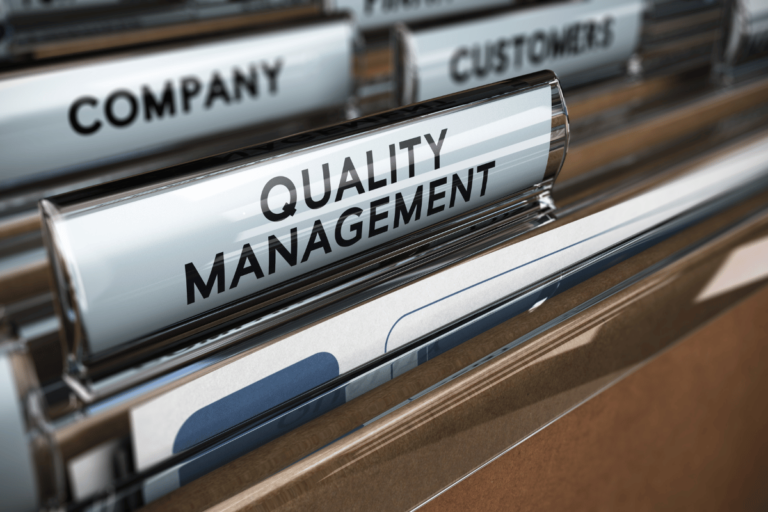Total Quality Management: The Game-Changer for Industries
Getting the Hang of Total Quality Management
Total Quality Management (TQM) is all about making things better, all the time. It’s a way to keep improving how a company does things, from making stuff to offering services. This idea took off when the U.S. and other countries saw Japan making top-notch products at lower prices in the late ’70s and early ’80s. Companies everywhere had to step up their game to keep up.
What’s the Deal with TQM?
TQM has been around for a while. It started in the early 1900s with folks like Walter A. Shewhart, Joseph M. Juran, and W. Edwards Deming. Shewhart kicked off modern quality control in the 1930s, Juran wrote a book on it in 1954, and Deming helped Japan get really good at it after World War II.
TQM is about everyone in the company pitching in to make things better. Leaders need to give the team what they need—like training and clear goals—to keep improving. When everyone’s on board, quality becomes part of the company’s DNA.
The Big Ideas Behind TQM
To make TQM work, companies follow some key ideas. These help them get better at what they do and keep customers happy.
- Customer First: Customers are the main focus. It’s about knowing what they want and making sure everything is set up to meet those needs. Happy customers stick around and tell their friends.
- Always Improving: TQM is about never settling. Companies keep looking for ways to do things better and cut out waste. Everyone’s ideas count, and small changes add up to big improvements over time.
- Empower Employees: Employees are key to making things better. Companies that listen to their workers and encourage new ideas see more innovation and teamwork. When employees feel valued, they’re more motivated to help the company succeed (LinkedIn).
- Focus on Processes: TQM looks at the whole process, not just individual tasks. By understanding how everything fits together, companies can find and fix problems, making things run smoother and more consistently (Lucidchart).
- Data Rules: Decisions in TQM are based on data. Companies collect and analyze info to spot trends and measure quality. This way, they can make smart choices that lead to better results.
By getting these TQM basics down, companies can set themselves up for success. TQM doesn’t just make products and services better—it boosts productivity, profits, and helps companies stay competitive. Want to know how to put TQM into action? Check out our section on Implementing Total Quality Control.
Implementing Total Quality Control
To nail total quality control (TQC), companies need to blend quality management systems and take a leaf out of successful TQM stories.
Blending Quality Management Systems
Blending quality management systems is a big step in getting TQC right. This means setting up a solid framework that covers all parts of quality control, from quality control inspection to statistical quality control methods.
A big part of this is creating standardized procedures and protocols. These give clear instructions for employees, making sure everyone is on the same page and quality control is consistent. Plus, companies should invest in training programs to boost employees’ understanding of TQC principles and techniques, promoting a culture of continuous improvement.
By blending quality management systems, companies can streamline their quality control processes, cut down on mistakes, and boost productivity. This also helps different departments communicate and work together better, making quality control a shared responsibility across the company.
Learning from TQM Success Stories
Looking at successful TQM stories can give companies valuable insights and motivation for their TQC journey. Two standout examples are Toyota Motor Corporation and Xerox Corporation.
Toyota Motor Corporation is famous for its TQM through the Toyota Production System (TPS). TPS focuses on lean manufacturing and just-in-time production to cut waste and boost efficiency. By sticking to TQM practices, Toyota consistently churns out high-quality vehicles, cuts costs, and keeps customers happy (Spiceworks).
Xerox Corporation made TQM a core strategy in the late 1980s to improve product quality and reduce defects. Their TQM efforts led to significant improvements in product quality and customer satisfaction, helping Xerox regain its competitive edge.
These stories show the game-changing power of TQM when done right. By studying these successful companies, others can learn how to implement TQC in their own unique ways.
By blending quality management systems and learning from TQM success stories, companies can build a strong foundation for TQC. This helps them improve product quality, optimize processes, and ultimately make customers happier.
Why Total Quality Management Rocks
Jumping on the Total Quality Management (TQM) train can seriously boost your business mojo. We’re talking better productivity, fatter profits, happier customers, and a bigger slice of the market pie. Let’s break it down.
Boosting Productivity and Profits
TQM is all about cutting out the junk—defects, waste, and inefficiencies. When you clean up your act, everything runs smoother. You use your resources better, make fewer mistakes, and get more done. This means more money in the bank and a leg up on the competition.
Studies show TQM can influence over 70% of productive behavior. That’s a big deal! By creating a culture where everyone’s always looking to improve, you can spot problems before they become disasters, manage risks better, and streamline your supply chain.
Making Customers Smile and Grabbing Market Share
At its core, TQM is about making stuff that people love. When you consistently deliver top-notch products, customers stick around. They tell their friends, and before you know it, your market share is growing.
TQM helps keep customers happy by creating a positive work environment and getting everyone involved in quality improvement—from the folks on the factory floor to the bigwigs in the boardroom. When everyone’s on the same page, it’s easier to meet or exceed customer expectations.
Plus, TQM strengthens your relationships with suppliers. Better collaboration means fewer hiccups in the production process, leading to smoother operations and fewer delays.
Wrapping It Up
Total Quality Management isn’t just a buzzword. It’s a game-changer. By adopting TQM principles, you can boost productivity, cut waste, and improve your bottom line. You’ll also make your customers happier, which means more repeat business and a bigger market share.
In short, TQM helps you run a tighter ship. You’ll see better cost management, stronger supplier relationships, happier employees, and more value for stakeholders. It’s all about creating a positive work environment and continuously improving.
What’s New in Total Quality Management
As industries change, so does Total Quality Management (TQM). It’s always adapting to new tech and future possibilities. Let’s break down two big parts of this evolution: tech advancements and what’s coming next.
Tech in TQM: The Game Changers
Tech has totally changed how companies do TQM. With new tools and software, businesses can make their quality control smoother, faster, and better.
One big tech leap in TQM is digital quality control inspection systems. These systems let companies keep an eye on things in real-time and gather data as they go. This means they can spot and fix problems right away. Automating inspections cuts down on human mistakes and makes quality checks more accurate.
Then there’s statistical quality control software. This stuff helps companies crunch numbers, spot trends, and make smart decisions to improve processes. By using these techniques, businesses can find ways to get better and keep an eye on their performance to make sure they’re always hitting high standards.
What’s Next for TQM
The future of TQM looks bright for companies that want to be the best. As competition heats up, TQM will be key to keeping customers happy and staying on top.
One exciting future trend is using artificial intelligence (AI) and machine learning (ML). These technologies can help companies sift through tons of data, find patterns, and predict problems before they happen. With AI and ML, businesses can tackle quality issues head-on, stop defects in their tracks, and make their processes super efficient.
Quality control in construction is also getting a lot of attention. Construction projects are complicated and involve many people, so quality control is crucial. By using TQM principles, construction companies can improve project quality, cut down on rework, and make customers happier.
Employee involvement will always be a big part of successful TQM. Getting employees involved in decisions, encouraging a culture of constant improvement, and letting them share their knowledge is key. When employees feel valued, they’re more likely to stick around and help the company succeed.
With tech always changing and a focus on employee involvement, the future of TQM is full of potential. By jumping on these trends and using both tech and human skills, companies can reach new heights in quality, productivity, and customer satisfaction.







